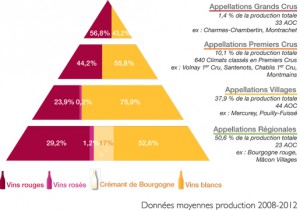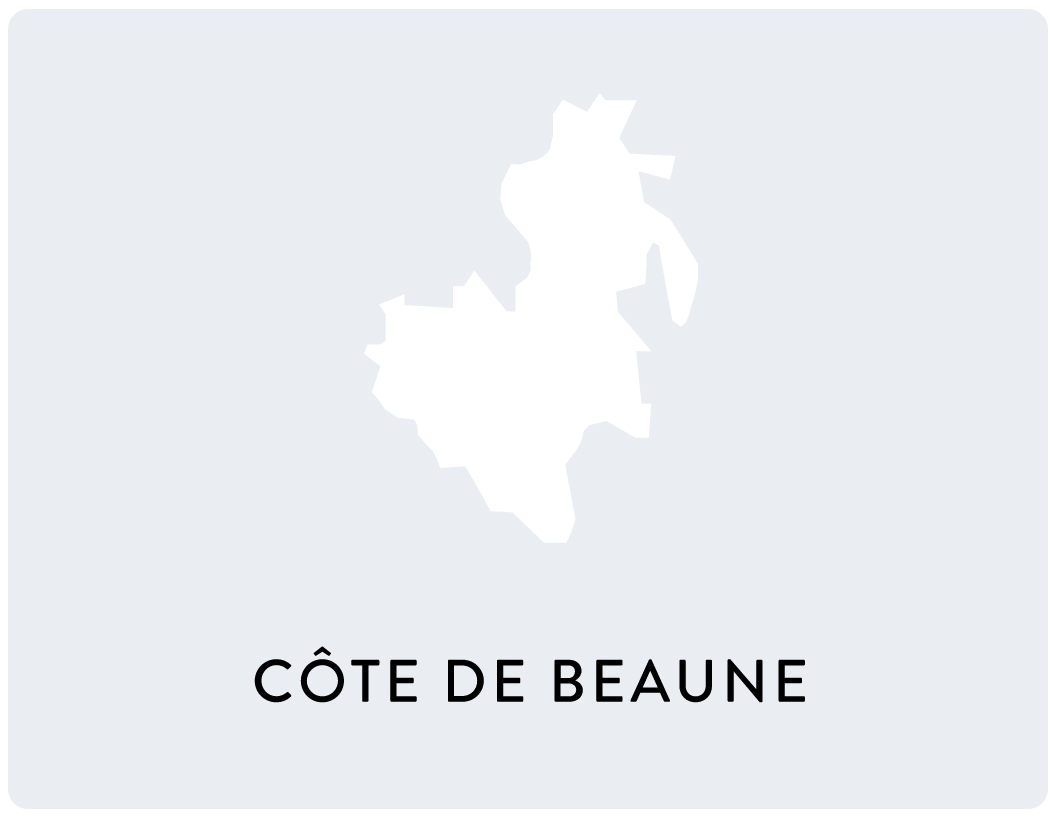Pommard
in Burgundy
Pommard, wine from the Côte de Beaune
Pommard, one of the most internationally renowned Burgundy wines, easy to pronounce, amateurs love its robust and tannic side. In addition, in the 19th century its name acquired worldwide notoriety, which is why a large part of its production is currently exported !
A favorable climate
The vineyards of the Côte de Beaune benefit from a predominantly oceanic climate with a semi-continental influence, frequent rains all year round, cold winters and hot summers.
a unique geology
The remarkable climatic conditions of the Côte de Beaune allow the Chardonnay grape to flourish and produce white wines with a unique character that are sought after around the world.
2000 YEARS OF HISTORY
From the 14th century, the monks, the Dukes of Burgundy, ... participated in the creation of unmissable sites such as the Hôtel-Dieu de Beaune and the Cîteaux abbey which make it so rich.
Pommard
According to Guillaume Paradin, historian of the Middle Ages, "The wines of Pommard are the flower of the wines of Beaune".
The Pommard controlled appellation of origin is a benchmark ! Known since the Middle Ages, this appellation has been protected and respected since 1936, since at the time Pommard was suffering from fraud.
Burgundy has a quarter of the AOC (Appellation d'Origine Contrôlée), is 83 out of 366 AOC wines in France. Including Pommard, village appellation of the Côte de Beaune, located between Beaune and Volnay in Côte d'Or, occupying the bottom and middle of the hill, generally on gentle slopes.
In Burgundy, the different plots determine a regional, municipal, premier cru and grand cru appellation depending on their geographical location.
Hierarchy of appellations in Burgundy
In Burgundy, the different plots determine a regional, municipal, premier cru and grand cru appellation depending on their geographical location.
In order to better navigate, its 83 appellations have been divided into 4 levels :

- The grands crus appellations
- The premiers crus appellations
- The communales appellations (villages)
- The regionales appellations (sometimes called "generic" or "sub-regional")
Here is the hierarchy of appellations for Pommard
- Pommard
- Pommard premier cru
- Pommard premier cru + name of a climat
- Pommard + name of a climat
This appellation offers red wines exclusively, made from the Pinot Noir grape variety. Either in Premier Cru (to which perhaps the name of the original climate should be added), an area of 115 hectares; or in communal appellation, a surface of 197 hectares, unfortunately no grands crus for Pommard.
Here are the 28 climates classified as Premier Cru :
- Les Rugiens-Bas
- Les Rugiens-Haut
- Les Grands-Épenots
- Les Petits-Épenots
- Clos des Épeneaux
- Les Charmots
- Les Arvelets
- La Platière
- La Chanière
- Les Pézerolles
- Les Saucilles
- Les Boucherottes
- En Largillière
- Clos de Verger
- Clos de la Commaraine
- La Refène
- Clos Blanc
- Derrière Saint-Jean
- Les Chaponnières
- Les Croix Noires
- Les Poutures
- Le Clos Micot
- Les Combes-Dessus
- Les Bertins
- Les Fremiers
- Les Jarolières
- Les Chanlins-Bas
- Le Village
These 28 climates classified as premier crus are divided into three parts, a Volnay side, another Beaune side and the last on the hillside, facing south, leading to Nantoux.
Two of them, Les Epenots (Beaune side) and Les Rugiens (Volnay side) are the best known Pommard premier crus !
Terroir
The terroir of the Pommard appellation benefits from an oceanic climate with a semi-continental influence, as for the vines, they are planted between 240 and 380 meters above sea level. They produce a grape with a lot of subtlety and a characteristic minerality of Burgundy.
Most of the communal appellations of Pommard are located at the bottom of the slope, on more clayey, less calcareous soils; sometimes higher, on brown calcareous and brown calcareous soils.
The Pommard premier cru appellations occupy the middle of the hillside, on clay-limestone soils, well drained thanks to a gravel of rocky debris and marly limestone (a mixture of clay and limestone). This terroir is very rich in fossils and ferrous nodules, its fatty soil makes it possible to produce excellent Pommard premier cru.
Tasting
The wines of the Pommard appellation are known to be powerful and tannic !
Lots of color, an intense red, ruby in appearance with purple reflections. A bouquet of extraordinary aromatic richness, notes of very ripe black fruits (blackcurrant, blackberry, blueberry, plum, …), a very good length where one feels slightly astringency in the mouth. A very firm wine, with present tannins.
When the Pommard ages, this appellation offers a wine that is deeper and rich in emotion! It is oriented towards chocolate, spicy (pepper, ...), animal (leather, ...) flavors, a delicate, pleasant and fruity structure on the palate. Without forgetting its beautiful power with its firm, massive and dense tannins!
This magnificent bottle goes wonderfully with red meats (prime rib, rib steak, …), game, lamb and, for surprising pairings, a cheese with character (époisses, langres, ...).
When serving, it is advisable to choose the most suitable glasses and a temperature between 14 and 16 ° C seems perfect.
The Pommard appellation has succeeded in seducing important figures in the history of France, such as Ronsard, Victor Hugo, Henri IV, Louis XV and why not you?
THE 20 COMMUNAL APPELLATIONS OF CÔTE DE BEAUNE

Pommard
This appellation is the king of reds, offering firm and robust wines.

Aloxe-Corton
It is the kingdom of pinot noir (red grape), robust and generous wines.

Pernand-Vergelesses
This appellation gives fleshy red wines and graceful whites.

Savigny-les-Beaune
Mostly fruity and structured red wines. White wines are rare.

Chorey-les-Beaune
The only appellation of the Côte de Beaune which extends over land in the plains.

Beaune
These well-drained terroirs allow the wine to be tender with notes of ripe fruit.

Ladoix
Ladoix offers colorful, powerful red wines and white wines with a bouquet.

Volnay
Red wines only, very delicate, classy and fragrant.

Monthélie
Monthélie is 90% red, pleasant, fruity wines with good aging potential.

Auxey-Duresses
The vineyard presents round and fatty white wines, fruity and peppery red wines.

Saint-Romain
The communal appellation offers mineral white wines and spicy red wines.

Meursault
Meursault is the largest village on the Côte de Beaune, with fresh and refined wines.

Blagny
A complete red wine of great elegance and a nice roundness in the mouth.

Puligny-Montrachet
The vines produce sunny, ripe and lively white wines. Red wines are extremely rare.

Chassagne-Montrachet
Appreciated since the Middle Ages, mineral whites and excellent reds.

Saint-Aubin
It is the specialist in tense, floral, creamy whites and light reds.

Santenay
Firm, robust red wines and tasty white wines of consistent quality.

Maranges
This vineyard is dedicated almost exclusively to reds.

Côte-de-Beaune-Villages
Only red, in the north supple wines and in the south firmer wines.

Côte-de-Beaune
This appellation offers both colors, whites and reds.
All wine regions








